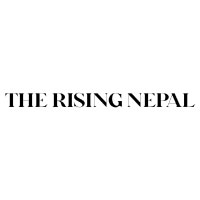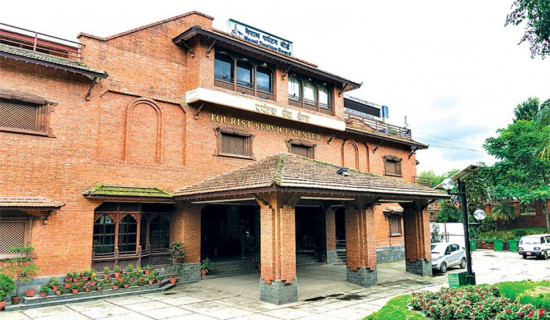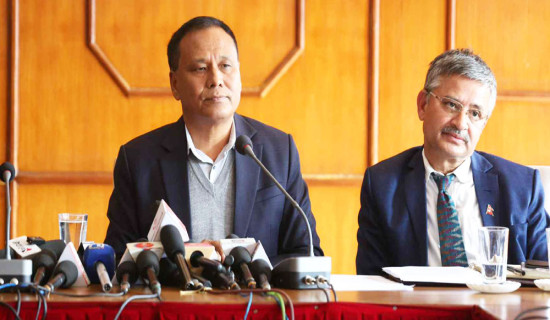- Wednesday, 24 December 2025
Leprosy Beyond Medical Boundaries
Prima Gharti Magar, 42, from a rural village of Rolpa, proudly shared her inspiring story of countless experiences of living with leprosy, social sufferings and intersecting societal challenges during the Nepal Leprosy Conference, 2025, which was recently hosted by the Epidemiology and Disease Control Division (EDCD), Ministry of Health and Population (MoHP), in coordination with a range of partners working in the field of leprosy. This timely conference aimed to broadly uncover the human face of leprosy and explore new practices, innovations, and opportunities through insightful sharing and synthesis of evidence for new strategic actions.
Diagnosed with leprosy at the early age of 11, Prima's life was initially hopeless due to the poor socio-economic status of her family. Moreover, her father and grandfather were also affected by leprosy. Sadly, people's attitudes, prejudices, and discriminatory behaviours were painful and unforgotten. She also did not get support from family but continued to struggle for survival. With good diagnosis, treatment, and care in a health facility run by the International Nepal Fellowship (INF) in Dang, her life has now transformed with a new hope, resilience, and powerful agency.
After treatment was over, she left home to start school with the moral and financial support from a few organisations working for people affected by leprosy. "I was determined in my mission for education and a dignified life. After earning a diploma in pharmacy, I have a pharmacy, which is a major source of income for maintaining my livelihood. Further, I mostly engage in several awareness and advocacy events to share that leprosy is curable. I have a new life now," Prima said confidently, for a hopeful future.
However, her worries continue as she often notices the fears of stigma and discrimination surrounding people affected by leprosy in their everyday lives. While global, regional, and national efforts are in place, there is a growing concern that leprosy is more than a public health issue. A representative from a network of people affected by leprosy said, "Social interventions are needed to address the socio-cultural, economic, and political determinants of leprosy. We must now create an enabling policy and legal environment to promote effective representation and engagement of affected people and their families."
Leprosy, known as Hansen's disease, is among the world's oldest and most dreaded diseases. Evidence suggests that it most likely originated in India or East Africa. Historical documents and a 4,000-year-old skeleton point to India. Genomic analysis of strains of Mycobacterium leprae indicates East Africa. A recent study suggests that M. leprae and M. lepromatosis settled in human ancestors as parasites millions of years ago.
While Nepal has demonstrated bold political leadership in controlling leprosy, local efforts are insufficient. Addressing the conference, Prime Minister KP Sharma Oli remarked, "We need more social awareness campaigns to eliminate leprosy. It is no longer hidden by now. The government will address some socio-legal barriers, as people affected by leprosy should not face any social discrimination."
Nepal's unwavering political will to end leprosy is worth noting. The Minister for Health and Population, Pradip Poudel, also stressed the urgency of a strategic roadmap to eliminate leprosy in a sustained approach. The concerted efforts to control leprosy must be result-oriented, well-coordinated among partners, and supported by credible evidence and practice.
It is essential to ensure that care systems respect and promote the dignity and autonomy of carers, care workers, and those receiving care. "Our health systems need to focus on active case finding and case-based surveillance to break the chain of transmission at large," said Dr Sushil Koirala, Country Representative of Noora Health. Sharing roses with all conference delegates as part of his popular rose campaign, he highlighted: "The rose campaign intends to raise public awareness about stigma and human rights issues related to leprosy and other infectious diseases such as HIV and tuberculosis. In essence, people affected by leprosy need social healing; treatment alone is not enough."
"Appreciating Nepal's significant progress, we continue to work with governments and partners to strengthen national capacity to achieve the goal of leprosy elimination," said Dr Rajesh Sambhajirao Pandav, WHO Representative. "With a sharp focus on early case detection, case management, post-exposure prophylaxis, and advocacy for reducing social stigma, we are working together with partners to effectively implement the National Leprosy Strategy (2021-2025), which aims at reaching the goal of zero leprosy," said Chandra Bhal Jha, Director of the EDCD.
Listening to interesting yet diverse experiences by health workers and supporting partners reveals considerable progress in the fight against leprosy at the local level. Yet overlooked is how poor and socially marginalised people affected by leprosy are living with stigma and discrimination. The limited social protection services and inadequate access to health care make their livelihoods more vulnerable. More importantly, existing social structures, hierarchies, cultural norms, and beliefs often limit their access to timely diagnosis, treatment, care, and support.
Despite stakeholders' competing interests and priorities, the role of national and international partners, including networks of people affected by leprosy, is worth noting. In addition, their technical support is crucial to strengthen further health systems, physical rehabilitation, disability-sensitive health care, and social reintegration services.
In a changed context, the role of anthropologists would be more relevant to explore further wider socio-cultural domains and intersecting social inequalities surrounding leprosy. From people's perspectives, it is crucial to understand how the efforts to eliminate leprosy are historically shaped and influenced by socio-political, cultural, and economic factors. Despite social advocacy and public health interventions, the underlying causes of social exclusion and economic marginalisation are profoundly visible. During disasters and health emergencies such as the COVID-19 pandemic, they are more vulnerable regarding access to health care and social support.
From an anthropological perspective, the social embeddedness of leprosy is an area for further exploration. Social meanings and cultural understanding of bodies and bodily processes are crucial to address social sufferings, indigenous healing practices, and adaptive mechanisms of affected people in their families. How our society treats affected people differently is a genuine concern for wider discussions, constructive criticisms, and societal actions.
More significantly, the social impact of leprosy is profoundly visible throughout human history. Our traditional efforts to eliminate leprosy need transformation and innovation for tangible progress. Moreover, removing leprosy by 2030 is a crucial responsibility of political leaders, policymakers, development partners, healthcare providers, networks of people affected by leprosy, and human rights activists.
In capacity-building or advocacy events, an urgent need is to create interactive, creative civic spaces of inclusion and partnership by placing affected people and their families within critical modes of adequate representation and engagement. A central question is: Why is progress still slow, and what is the way forward?
According to the EDCD, by the end of the fiscal year (2023/2024), a total of 2,472 new leprosy cases were identified in Nepal. Of them, 1,042 were women and 136 were children under 14. Health Secretary Dr Bikas Devkota highlighted: "The prevalence of leprosy is uneven within and across provinces. More than one-third of the new cases are found in Madhesh Province, followed by Lumbini with over one-fourth of the total."
However, it is high time to critically assess and explore why the prevalence is higher in the Terai region. Shaping the future of the elimination of leprosy requires a holistic consideration of social, cultural, economic, political, and geographical determinants. Listening to the concerns of people affected by leprosy, we need to understand how they perceive, communicate, interpret, and socially produce local narratives of leprosy in their everyday lives.
(Bhandari is a health policy analyst interested in anthropology.)
















